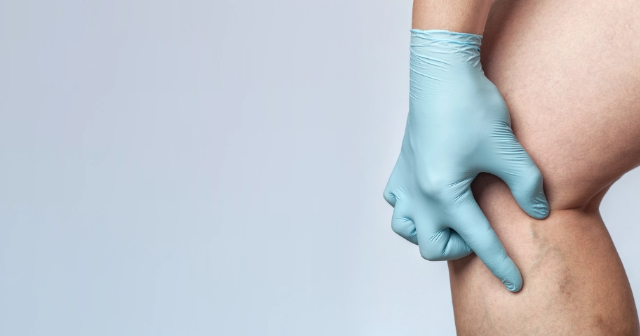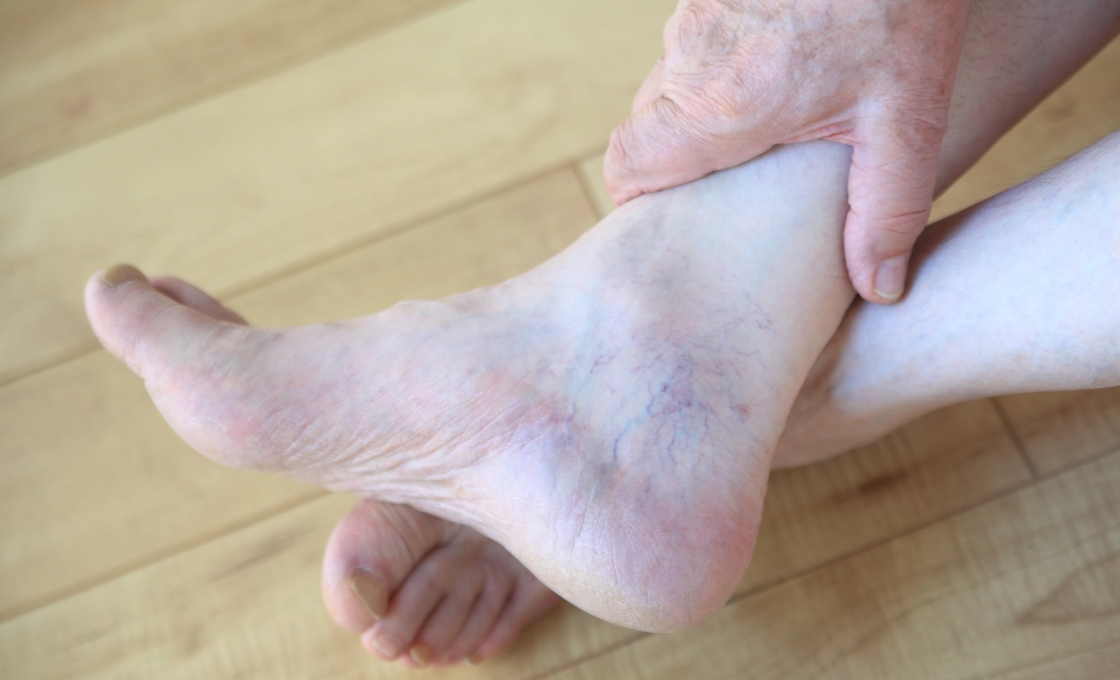

Spider Veins
What are spider veins?
Spider veins are small clusters of colored veins that commonly appear on your legs and feet. They’re easily noticeable through the surface of the skin, appearing as purple, blue, or red discolorations that look like spider webs or tree branches. Spider veins are usually harmless, but they can cause swelling or a feeling of heaviness in your legs.
What causes spider veins?
Spider veins develop when the valves inside of your veins weaken and stop working normally. Healthy veins contain one-way valves that carry blood back to the heart. When the valves weaken, blood can flow backward and pool inside the vein. Pressure builds within the vein because of the extra blood. This weakens the walls of the vein over time, causing it to bulge and branch out, resulting in spider veins.
Spider veins are more common in women than men, and you are at a higher risk of developing spider veins if a member of your family has them. They are also common in people that sit or stand for extended periods. Other risk factors for spider veins include age, pregnancy, and obesity.
REQUEST NOWHow are spider veins diagnosed?
Your dermatologist will perform a physical exam to diagnose spider veins, carefully examining the patterns of veins on your legs, feet, or other areas. The doctor will also check for any signs of swelling or changes in skin color. The dermatologist may also perform an ultrasound or venogram to see how blood is flowing through your veins.
What are my spider vein treatment options?
Based on the information from the physical exam and testing, your Forefront dermatologist will recommend the best treatment for spider veins. To provide you with the most effective results, your dermatologist may recommend more than one treatment option. Treatments range from self-care at home, spider vein treatment injection, and laser therapy.
Laser treatment: Laser treatment for spider veins uses the heat from light energy to destroy spider veins without affecting the surrounding skin. If you have small spider veins, you’ll notice immediate results after one laser treatment. Larger spider veins usually require two to three treatments before they disappear, which can take one to three months.
Injection treatment: Sclerotherapy is a treatment that uses a series of injections to cause spider veins to collapse. The procedure doesn’t require anesthesia and is performed by a board-certified dermatologist at Forefront Dermatology.
Self-care: If you have small spider veins that aren’t causing your legs to ache or swell, following these self-care tips at home can improve circulation:
Exercise regularly:
- Keep your legs elevated while sitting to prevent blood from pooling in your legs
- Wear compression stockings to reduce swelling and improve blood flow
- If you sit or stand for long periods, take a small break every 30 minutes to walk around
- Avoid soaking in a hot bath for extended periods, which can cause your veins to swell

What happens during a sclerotherapy procedure?
During your sclerotherapy injection treatment session, your dermatologist will inject a solution directly into the affected veins. The chemical solution affects the walls of the vein, causing them to swell shut. Once the vein collapses, blood is prevented from flowing into the area. If you have several spider veins, the treatment may require multiple injections to target the wall of each vein. Depending on the number of veins requiring treatment, the procedure can last between fifteen minutes to one hour.
After injecting the affected veins, your dermatologist will massage the treatment area and place a compression stocking on each leg. To help with healing and to maintain pressure on the treated veins, your dermatologist will recommend wearing compression stockings for two to three weeks. It’s also important to take daily walks and move around as much as possible after the procedure to prevent blood clots from forming and ensure the best possible results. You can usually return to work and most everyday activities following your procedure. We also recommend avoiding direct sun exposure for at least two weeks.
Over three to six weeks, your spider veins will gradually fade. Most patients require two or three treatments for full results.
If spider veins are causing you discomfort or negatively affecting your appearance, schedule a consultation with a skincare expert at Forefront Dermatology.
Why choose spider vein sclerotherapy?
Sclerotherapy treatment is a common procedure, and many dermatologists regard it as the treatment of choice for spider veins. It’s a minimally invasive procedure that can significantly relieve swelling and achiness in your legs, and it can fade spider veins within several weeks.
Interested in Spider Veins? Request a consultation with a skin specialist today.
*Treatment options may vary at each location.Please confirm your desired treatment is offered at your preferred location when scheduling. *Age Restriction.
For patients scheduling who are under 18 years of age (19 in Alabama) please make sure you have permission from your parent or legal guardian to schedule this appointment. Your parent or legal guardian must accompany you on your initial visit and on certain subsequent visits to provide appropriate informed consent.